Customer decision-making analysis based on big social data using machine learning: a case study of hotels in Mecca
- PMID: 36340596
- PMCID: PMC9616417
- DOI: 10.1007/s00521-022-07992-x
Customer decision-making analysis based on big social data using machine learning: a case study of hotels in Mecca
Abstract
Big social data and user-generated content have emerged as important sources of timely and rich knowledge to detect customers' behavioral patterns. Revealing customer satisfaction through the use of user-generated content has been a significant issue in business, especially in the tourism and hospitality context. There have been many studies on customer satisfaction that take quantitative survey approaches. However, revealing customer satisfaction using big social data in the form of eWOM (electronic word of mouth) can be an effective way to better understand customers' demands. In this study, we aim to develop a hybrid methodology based on supervised learning, text mining, and segmentation machine learning approaches to analyze big social data on travelers' decision-making regarding hotels in Mecca, Saudi Arabia. To do so, we use support vector regression with sequential minimal optimization (SMO), latent Dirichlet allocation (LDA), and k-means approaches to develop the hybrid method. We collect data from travelers' online reviews of Mecca hotels on TripAdvisor. The data are segmented, and travelers' satisfaction is revealed for each segment based on their online reviews of hotels. The results show that the method is effective for big social data analysis and traveler segmentation in Mecca hotels. The results are discussed, and several recommendations and strategies for hotel managers are provided to enhance their service quality and improve customer satisfaction.
Keywords: Big social data; Customer decision-making; Customer satisfaction; Hotel industry; Machine learning; Segmentation; Text mining; eWOM.
© The Author(s), under exclusive licence to Springer-Verlag London Ltd., part of Springer Nature 2022, Springer Nature or its licensor (e.g. a society or other partner) holds exclusive rights to this article under a publishing agreement with the author(s) or other rightsholder(s); author self-archiving of the accepted manuscript version of this article is solely governed by the terms of such publishing agreement and applicable law.
Conflict of interest statement
Conflict of interestThe authors declare that they have no conflicts of interest.
Figures

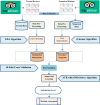
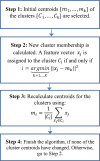


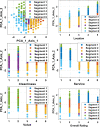
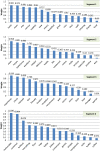

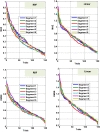
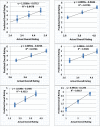
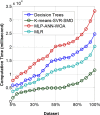
Similar articles
-
What is the impact of service quality on customers' satisfaction during COVID-19 outbreak? New findings from online reviews analysis.Telemat Inform. 2021 Nov;64:101693. doi: 10.1016/j.tele.2021.101693. Epub 2021 Aug 3. Telemat Inform. 2021. PMID: 34887617 Free PMC article.
-
Customer satisfaction with Restaurants Service Quality during COVID-19 outbreak: A two-stage methodology.Technol Soc. 2022 Aug;70:101977. doi: 10.1016/j.techsoc.2022.101977. Epub 2022 Apr 30. Technol Soc. 2022. PMID: 36187884 Free PMC article.
-
A Hybrid Method for Customer Segmentation in Saudi Arabia Restaurants Using Clustering, Neural Networks and Optimization Learning Techniques.Arab J Sci Eng. 2023;48(2):2021-2039. doi: 10.1007/s13369-022-07091-y. Epub 2022 Jul 26. Arab J Sci Eng. 2023. PMID: 35910042 Free PMC article.
-
Roboethics of tourism and hospitality industry: A systematic review.PLoS One. 2023 Jun 30;18(6):e0287439. doi: 10.1371/journal.pone.0287439. eCollection 2023. PLoS One. 2023. PMID: 37390063 Free PMC article.
-
Sentiment Analysis of Customer Reviews of Food Delivery Services Using Deep Learning and Explainable Artificial Intelligence: Systematic Review.Foods. 2022 May 21;11(10):1500. doi: 10.3390/foods11101500. Foods. 2022. PMID: 35627070 Free PMC article. Review.
Cited by
-
The analysis of rural tourism image optimization under the internet of things and deep learning.Sci Rep. 2024 Dec 2;14(1):29898. doi: 10.1038/s41598-024-81868-z. Sci Rep. 2024. PMID: 39622993 Free PMC article.
-
Sociodemographic relationships of motivations, satisfaction, and loyalty in religious tourism: A study of the pilgrimage to the city Mecca.PLoS One. 2023 Mar 30;18(3):e0283720. doi: 10.1371/journal.pone.0283720. eCollection 2023. PLoS One. 2023. PMID: 36996079 Free PMC article.
References
-
- Halim YT, Halim HT (2013) Guest Satisfaction and Hotel Profitability in Egypt. Journal of Association of Arab Universities for Tourism and Hospitality, 10(1).
-
- Laškarin Ažić M, Dlačić J, Suštar N. Loyalty trends and issues in tourism research. Tourism and Hospitality Manag. 2020;26(1):133–155. doi: 10.20867/thm.26.1.8. - DOI
-
- Chang Y-C, Ku C-H, Chen C-H. Social media analytics: Extracting and visualizing Hilton hotel ratings and reviews from TripAdvisor. Int J Inf Manage. 2019;48:263–279. doi: 10.1016/j.ijinfomgt.2017.11.001. - DOI
-
- Tran LTT, Ly PTM, Le LT. Hotel choice: a closer look at demographics and online ratings. Int J Hosp Manag. 2019;82:13–21. doi: 10.1016/j.ijhm.2019.03.015. - DOI
-
- Barsky JD. Customer satisfaction in the hotel industry: Meaning and measurement. Hospitality Res J. 1992;16(1):51–73. doi: 10.1177/109634809201600105. - DOI
LinkOut - more resources
Full Text Sources
Miscellaneous
